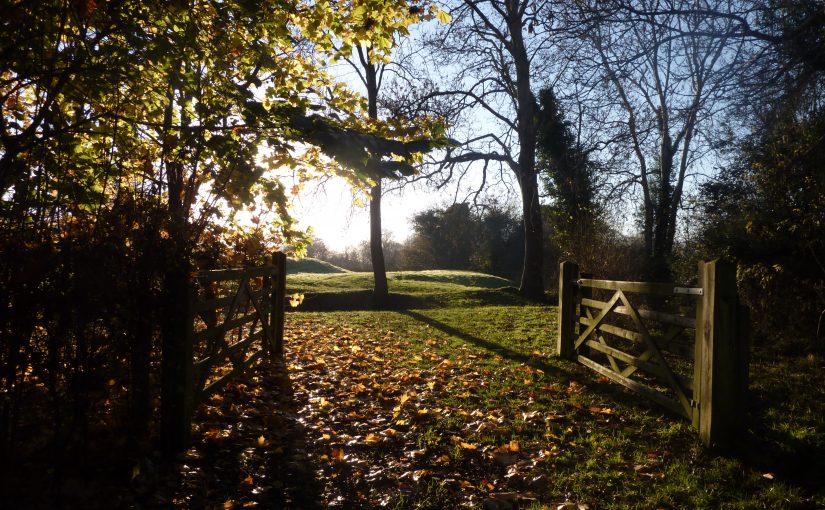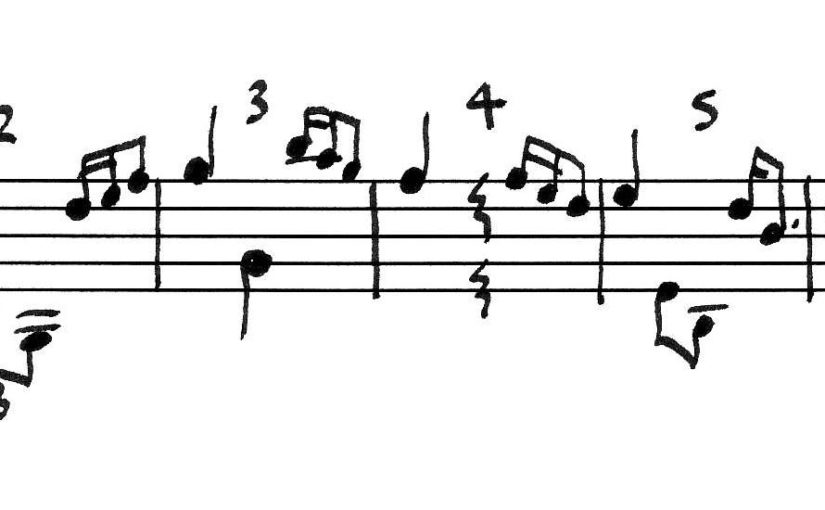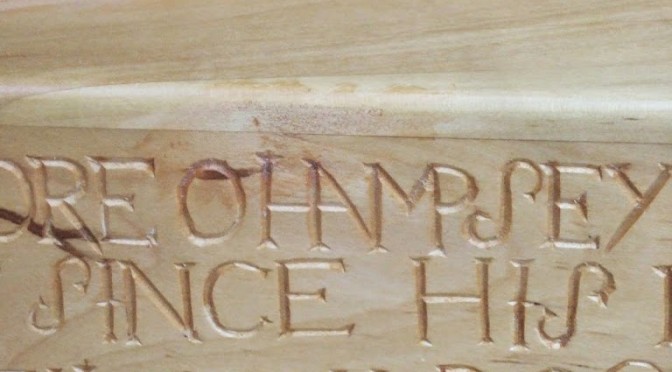Burns’s March is one of the first tunes taught to young harpers. In this blog post I am going to describe the live transcription notations that we have from Irish harper tradition-bearers in the late 18th and early 19th century. Then I will try and find derived works that give us contextual information and attribution tags. And finally I will look at some independent versions or variants in other sources.
Continue reading Burns’s MarchTag: Hempson
Codladh an tSionnaigh
Edward Bunting wrote both tune and text of the song Codladh an tSionnaigh into his little collecting pamphlets, some time in the 1790s. He also wrote a fragment of an instrumental variation into a different collecting pamphlet, apparently at a different place and time.
These notations are very interesting. The song tune and lyrics especially is perhaps unique in Bunting’s manuscripts. In this post we will look at what he has put in his collecting pamphlets, and collate this against other versions of the song, and try to say something useful about the tune and Bunting’s notation of it.
Continue reading Codladh an tSionnaighMaidin bhog aoibhinn
During the 1790s, Edward Bunting made four different live transcriptions of the tune of Maidin bhog aoibhinn. They are in different sections of QUB SC MS4.29, and were transcribed from four different tradition-bearers. Bunting published a kind of composite or synthetic version of the tune in his Ancient Music of Ireland (1840). In this post we are going to look at the four different live transcriptions, and try to say something useful about each of them.
Continue reading Maidin bhog aoibhinnEleanor Plunkett
Carolan’s song addressed to Eleanor Plunkett, which begins “A Nelly an chúil chraobhaigh”, is fairly well known nowadays.
Continue reading Eleanor PlunkettA chailíní, an bhfaca sibh Seoirse?
I made a demonstration video of A chailíní, an bhfaca sibh Seoirse, played (with some editorial adjustments) from Edward Bunting’s live transcription from old Irish harp performance in the 1790s.
Denis O’Hampsey as a progressive
Edward Bunting was fascinated by the aged harper Denis O’Hampsey. Bunting visited him in Magilligan in the 1790s, making live transcriptions of O’Hampsey’s playing into his pocket notebook, and much later eulogising him in 1840 as some kind of living fossil, preserving a much more ancient strand of the Irish harp tradition than any of the younger harpers.
A pupil of Hempson
Patrick
tolLangan
my very old teacher
a pupil of Hempson
told me
He plucked the
strings with his
long nails
J P Sherwin
Here lies Lappin, harper’s king
Ann Heymann was probably the first person to spot the lyrics “Here lies Lappin” associated with Burns’s March, including them in her book Secrets of the Gaelic Harp (1988). Continue reading Here lies Lappin, harper’s king
The Highland Lamentation
I have been working with a student on Rory Dall’s Port from James Oswald’s Caledonian Pocket Companion. I have written on this blog before about how I think this tune was composed by Oswald as a pastiche of old Gaelic harp style.
Downhill harp poem
Two years ago to the week, I had my HHSI Student Downhill harp here in preparation for using it for a concert – my Carolan, Connellan and Lyons programme which I played outside in the Botanic Garden. While the harp was here I carved the lettering on the forepillar, and gilded the carved letters.
This week the harp is again at my house, as I am going to use it for my Lament for the Union concert next week. And so how could I resist continuing my very protracted programme of decorating the instrument?
 As well as some subtle painted highlights, today I carved the lettering for the poem on the soundbox. I traced my photograph of Cormick O’Kelly’s original 18th century poem, but I changed the lettering to be relevant to me and to this particular instrument. I like the idea of changing the poem – like how a modern harpsichord maker puts a replica Ruckers or Blanchard rose in the soundboard of their replica harpsichord, but replaces the old master’s initials with their own.
As well as some subtle painted highlights, today I carved the lettering for the poem on the soundbox. I traced my photograph of Cormick O’Kelly’s original 18th century poem, but I changed the lettering to be relevant to me and to this particular instrument. I like the idea of changing the poem – like how a modern harpsichord maker puts a replica Ruckers or Blanchard rose in the soundboard of their replica harpsichord, but replaces the old master’s initials with their own.
I was originally planning to gild this lettering but now that it is finished, because the letters are significantly smaller than the gilded forepillar ones, and because there are so many more of them, I decided I liked them natural wood. The poem is quite hard to read with all the ligatures and the crowded capital letters with few word spaces. I think it gives a subtle lift to the whole instrument.
I love it when ancient things have inscriptions on them, it is a kind of literature, and it is also a kind of direct communiaction between the thing and ourselves, more direct than we usually get with archaeological objects where the comminication has to be inferred or reconstructed. I am very pleased to have captured a little of that atmosphere and ambience on my harp now, even though it is not actually an ancient harp or even an ancient text – nonetheless it is like the harp is speaking directly to us.
I was also struck by the final 2 words of the poem: “call me”, like the monster in The Forest.










